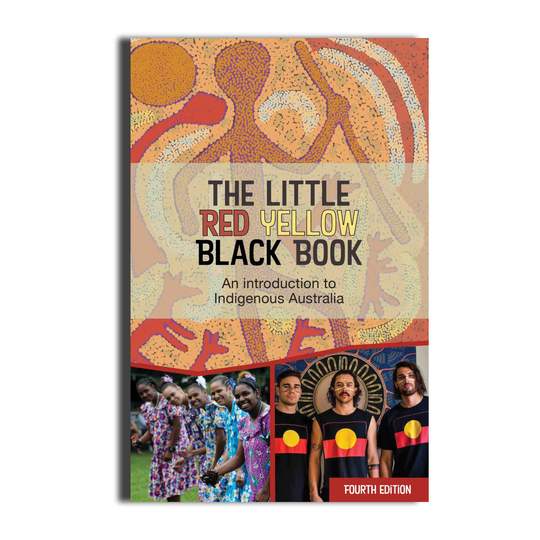
Title
The Little Red Yellow Black Book : An Introduction to Indigenous Australia
Author
Australian Institute of Aboriginal and Torres Strait Islander Studies Press
Secondary Authors
Bruce Pascoe
Illustrators
Amity Raymont, Design
Publisher, Date
AIATSIS Press, 2018 4th Edition (first pub 1994)
Audience
Secondary, Upper Primary
AC Links/EYLF
ACELA1500, ACELA1502, ACELT1608, ACELT1609, ACELT1610, ACHASSK107, ACHASSK108, ACHASSK109, ACHASSK110, ACHASSK112, ACHASSK113ACELA1500, ACELA1502, ACELT1608, ACELT1609, ACELT1610, ACHASSK107, ACHASSK108, ACHASSK109, ACHASSK110, ACHASSK112, ACHASSK113, ACSHE081, ACSSU083, ACAVAM114, ACAVAR117, ACADAM011, ACADAR012, ACAMUM089, ACAMUR091, ACPPS051, ACPPS053, ACPPS054, ACPPS055, ACPPS056, ACPPS057, ACPPS058, ACPPS059, ACPPS060, ACELA1515, ACELA1518, ACELT1613, ACELT1614, ACHASSK134, ACHASSK135, ACHASSK137, ACHASSK140, ACSSU094, ACSHE100, ACELA1528, ACELA1529, ACELT1619, ACELT1621, ACELT1622, ACELT1803, ACDSEH148, ACHGK041, ACHGK043, ACHGK046, ACSHE119, ACSHE223, ACSHE120, ACAVAM118, ACAVAR124, ACADAR019, ACAMUR098, ACPPS074, ACPPS075, ACPPS077, ACPPS078, ACPPS079, ACPMP085, ACELA1540, ACELA1541, ACELT1626, ACELT1627, ACELT1628, ACELT1807, ACHGK049, ACSHE226, ACSHE135, ACELA1550, ACELA1551, ACELT1663, ACELT1771, ACELT1634, ACELT1635, ACDSHE084, ACDSEH020, ACDSEH090, ACDSEH091, ACHGK065, ACHGK067, ACHGK069, ACSHE157, ACSHE160, ACAVAM125, ACAVAR131, ACADAR026, ACAMUM102, ACAMUR105, ACPPS089, ACPPS093, ACPPS098, ACPMP104, ACELA1563, ACELA1564, ACELA1565, ACELT1639, ACELT1640, ACELT1812, ACELT1642, ACELT1643, ACOKFH022, ACOKFH024, ACDSEH108, ACDSEH106, ACDSEH023, ACDSEH104, ACDSEH106, ACDSEH134, ACDSEH143, ACHGK071, ACHGK072, ACHGK076, ACHGK081, ACSHE191, ACSHE192, ACSHE194, ACSHE230
ISBN
9780855750527
Add to Favourites
-
Subjects
-
Annotation
-
Teaching Resources
